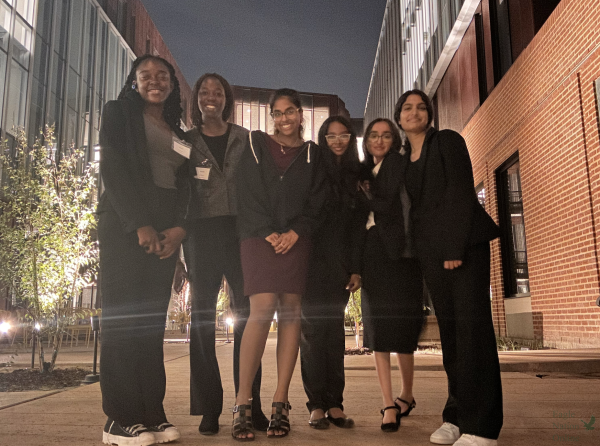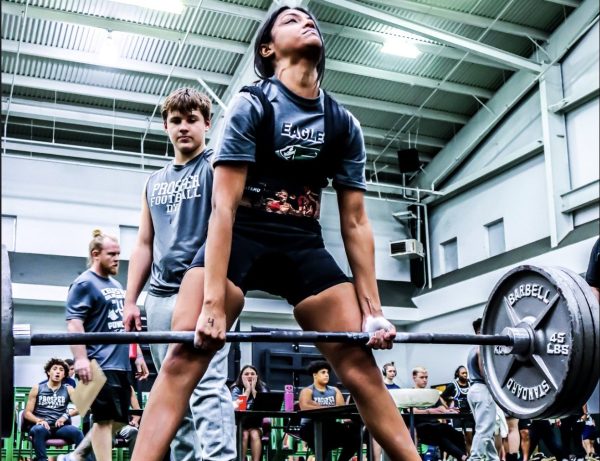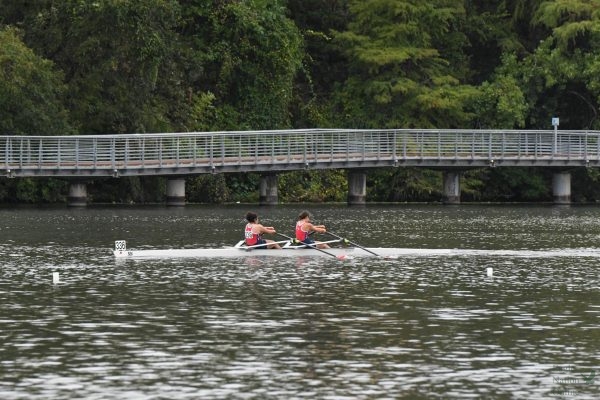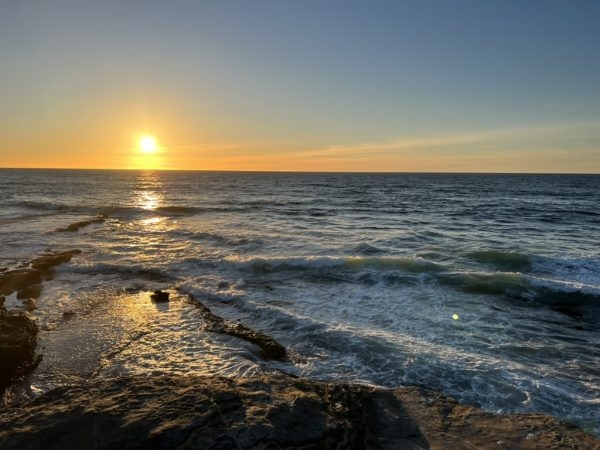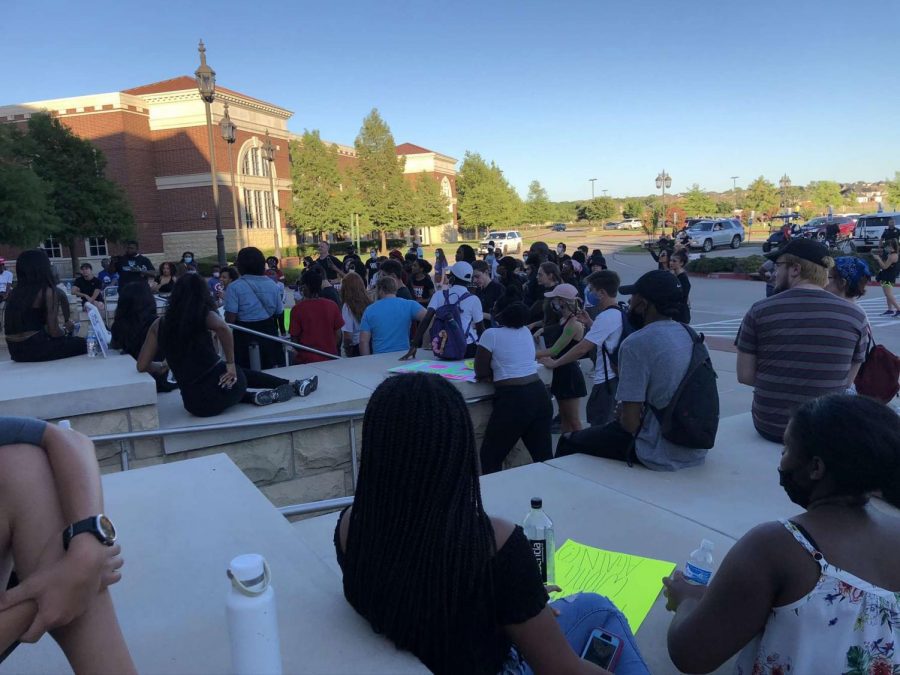Column: Writer challenges students to voice positions, see effect of social media on Black Lives Matter movement
To protest for the Black Lives Matter movement, Prosper community members stop in front of Prosper High School. This protest happened on June 10, and the protestors can be seen wearing masks due to COVID-19. This protest was 11 days after George Floyd’s death on May 25, 2020. In the attached article, columnist Alyssa Clark challenges readers to continue to use the power of their First Amendment rights on social media. “So, students: use your voice. It matters,” Clark said. “Stand up for those who are less privileged than you. Make a change when you see wrongfulness and inequality, especially in the face of adversity.”
Everyone knows the trending hashtag: #BlackLivesMatter, but some have forgotten the true meaning, purpose and the justice that is fought for with those three words.
— Junior Alyssa Clark
From videos of a man named George Floyd, stuck under an officer’s knee saying “I can’t breathe,” to black squares and infographics, social media has played a huge role in the Black Lives Matter movement.
Everyone knows the trending hashtag: #BlackLivesMatter, but some have forgotten the true meaning, purpose and the justice that is fought for with those three words.
The movement has been around for a while, beginning around 2013 after the start-up of the Black Lives Matter organization was founded after the death of Trayvon Martin. As of Sept. 24, protests started 121 days ago, on May 26, 2020, which was the day after George Floyd’s death. Petitions and protests started, videos and links were posted on everyone’s stories and everyone from celebrities to students to parents expressed their thoughts on social media.
A big part of the recent Black Lives Matter movement spark was the #BlackOutTuesday trend, where users, especially on Instagram, posted a black square on their page. 28 million users participated, and while this was meant to draw awareness to the issue and start the conversation, many people ended it there. Posting one black square isn’t good enough. Awareness is great and important to start educating yourself and others, but real change comes from continuing the conversation of injustice and how change can be created.
Before you read on, it’s important to note that people of all races have sadly lost their lives to police officers, and police officers have lost their lives too, daily, protecting citizens and communities. According to the FBI, 93 police officers were killed in 2017.
But when you compare it to the statistics covering the deaths of citizens by police officers, the numbers don’t match up. According to Police Violence Report, in 2017, 1,147 people were killed by officers. 92% of these deaths were shootings. Only 1% of the cases, 13 out of the 1,147 cases, were officers charged with a crime. 68% of the U.S. population was white in 2017, and they made up 48% of the deaths. Black people made up 13% of the population, but they made up 27% of the officer-caused death. Journalist’s Resources said the fatality rate was 2.5 times higher among blacks than whites in 2019. This information is no secret though, and people have used their social media accounts to express how they feel about these deaths as well.
There’s one side of Instagram, and other social media platforms like Facebook and Twitter, where activists have dedicated their accounts to spread awareness, educate, and link petitions and charities where people can donate. These are the people shedding light on cases of police brutality in America, and who are trying to bring justice to innocent black lives that were lost at the hands of police officers, like Breonna Taylor or Elijah McClain.
But then, there’s the other side, where no one can get along.
Social media users also are hating on the protestors who are advocating for reform in our society. Riots cause trouble for peaceful protests. This is the side that is ruining the true purpose of the movement. This hatred and negativity come from both arguments and sides on this issue. Social media has highlighted the good and bad issues for everyone, and it has continued to be a source for people to exercise their First Amendment right to freedom of speech.
Other social media platforms are used as forms of activism, as well. TikTok, a video-streaming platform with over 200 million users, has played a big part in spreading information about the Black Lives Matter movement. Trending sounds, like “Arrest the killers of Breonna Taylor” circulated everyone’s For You’ page. People use their pages to talk about unheard of stories of black lives lost to police brutality and racism, and their posts continue to shed light on this topic. The influence of the Black Lives Matter movement has reached all platforms in different ways. One of the main reasons this influence has been so big on social media is because young people are using their voices to spread knowledge, information, and opinion. No other generation has been given this luxury like ours.
So, students: use your voice. It matters. Stand up for those who are less privileged than you. Make a change when you see wrongfulness and inequality, especially in the face of adversity. There’s already so much hatred in the world. It’s up to social media users to educate and spread awareness on accurate, real information that advocates for change. This type of activism isn’t just one black square then done, it requires time and research, checking your own privilege for some, and recognizing the true issues that may even be in your own community.
Columnist Note: The school district’s police department is a great one, and their officers are not afraid to handle questions concerning topics like this one. See Chief Officer Chad Vessel’s answers in reporter Kalyani Rao’s article. You can find that interview here or in the link below this column. He explained how the PISD police department sees this movement, along with many other topics like COVID-19.
Q & A: Police Chief Chad Vessels provides insider view of PISD department
Your donation will support the student journalists of Prosper High School. Your contribution will allow us to purchase equipment and cover our annual website hosting costs.
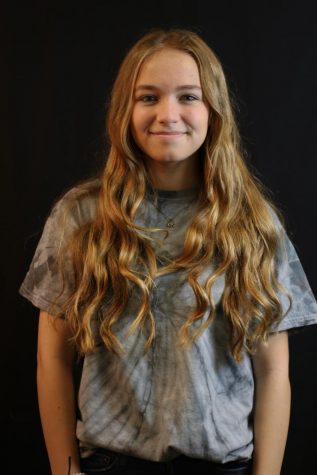
Honors, Experience and Awards:
UIL Journalist, District Qualifier 2019 - 2022
Quill & Scroll Honor Society Member
2 TAJE Honorable Mentions in 2020, 2021
TAJE Best in Texas 2022 - Excellent - Podcast
TAJE Best in Texas 2022 - Honorable Mention - Podcast
TAJE Best in Texas 2022 - Excellent - Sports Column
TAJE Best in Texas 2022 - Excellent - Staff Editorial
ILPC Award Winner for Reviews and Video Packages
Previous Hope Squad Member, Former Social Media Director for ENO
8 Best of SNO Publications



